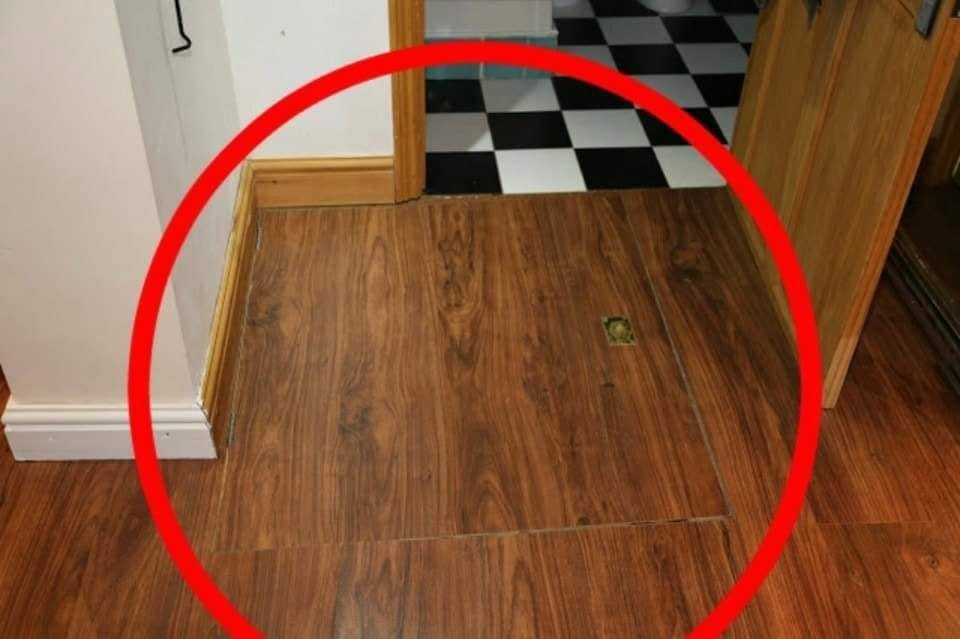When purchasing a new apartment, excitement and anticipation often take center stage. You picture yourself decorating, arranging furniture, and turning it into a cozy sanctuary. That was exactly how one man felt when he secured an incredibly affordable one-bedroom apartment in an old 19th-century building. It felt like he had stumbled upon a deal too good to pass up. But only a few days after moving in, he realized that the low price tag came with a haunting secret buried just below the surface.

The building had an undeniable charm. Its high ceilings, intricate moldings, and historical architecture hinted at its past life as a monastery. While some might have found its age unsettling, the man appreciated the character it brought to the space. The apartment itself was in surprisingly good condition, tucked away on the ground floor with enough space for one person to live comfortably.
However, as he settled in, a lingering question kept gnawing at him: Why was this apartment so cheap?
Driven by curiosity and an urge to explore every corner of his new home, the man began inspecting every inch of the apartment. During his search, he stumbled upon a peculiar door. It was small, oddly placed, and partially concealed behind an old wooden cabinet. Its handle was cold, and the door itself felt ancient, almost as if it had been untouched for decades.
Curiosity outweighed caution, and he twisted the handle. The door creaked open, revealing a narrow, dusty staircase descending into darkness. The air that seeped out carried a musty scent of damp stone and mildew. Grabbing a flashlight and mounting a small light on his camera, he began his descent into the unknown.
The staircase led to a sprawling underground cellar. Its size was astonishing—it stretched beneath the entire ground floor of the building, with walls made of cold, aged stone. Shadows danced across the uneven surfaces as his flashlight illuminated the space. At first, it seemed like a forgotten basement, but as he ventured further, the reality of what he had uncovered began to take shape.
Rows of small, confined spaces lined the cellar—tiny rooms enclosed by rusted iron bars. They resembled prison cells, complete with heavy chains attached to the walls. Scratches etched into the stone hinted at desperation, and the air was thick with an oppressive stillness. The deeper he went, the more the weight of the cellar’s history pressed down on him.
It wasn’t just the prison-like cells that sent chills down his spine; it was the realization that these walls had witnessed suffering, fear, and perhaps worse.
But the most horrifying discovery was yet to come. In one of the far corners of the cellar, hidden behind a reinforced wooden door, he stumbled upon a chilling sight: a stone slab, worn and stained, sat in the center of a dimly lit chamber. The slab had deep grooves carved into it, seemingly designed to channel liquid away from its surface. Strange, faded symbols adorned the surrounding walls—symbols that felt ancient and ominous.
The stone slab, the markings, and the oppressive silence of the room painted a terrifying picture. This wasn’t just an old basement or storage cellar. It had been something far darker—a place of rituals, suffering, and possibly sacrifice.
His breath quickened as he scanned the chamber with his camera, capturing every detail. The eerie silence was broken only by the sound of dripping water echoing somewhere in the distance.
Retreating back to his apartment, the man slammed the cellar door shut and locked it. But the knowledge of what lay just beneath his feet made it impossible to relax. Every creak of the wooden floor, every faint noise from below, felt like a sinister whisper reminding him of what he had found.
In the days that followed, he dove into research, combing through archives and speaking to anyone who might know the building’s history. What he discovered was both fascinating and horrifying. The building had been repurposed multiple times throughout history—first as a monastery, then as a prison, and later rumored to have been used for ritualistic purposes during a particularly dark period.
The apartment’s low price suddenly made perfect sense. The real estate listing had conveniently omitted the building’s haunting past, leaving him to stumble upon its secrets on his own.
Unable to shake the feeling of dread, the man eventually made the difficult decision to leave. The weight of what he had uncovered was simply too heavy to carry, and no amount of renovation or cheerful decor could erase the chilling reality of what lay below his floor.
Sometimes, a low price isn’t a bargain—it’s a warning. And in this case, the price of the apartment wasn’t measured in dollars but in the dark history etched into its very foundation.
As he walked away from the building for the last time, he couldn’t help but glance back, wondering how many others had walked those same halls, oblivious to the horrors lurking just below their feet. Some secrets are better left buried, but when they’re discovered, they have a way of leaving scars that never truly fade.





